Wolfdancer Golf Club
- gatexas
- Dec 27, 2017
- 15 min read
Wolfdancer Golf Club, designed by Arthur Hills and Associates in 2006, is situated along the Colorado River in Lost Pines, Texas. The course's blend of modern and classical architecture makes it an enjoyable experience for everyone who plays, hence the course ranking of 42nd on the Dallas Morning News' latest golf course rankings for Texas. The course is also on our Best Values list as being a course where the value matches the quality of architecture as well as featuring two holes on our Texas 54. Players will be in awe of the course's natural routing with the first twelve holes playing along a ridge line and finishing down in the Colorado River Valley. Walking off the final hole, players will have had a memorable experience on one of the best public courses in the state. Players can play the course regardless of wether or not they're staying at the Lost Pines Resort making it a great destination for a buddies trip or just a fun round of golf.
Hole 1: 420 yards Par 4
The first hole at Wolfdancer Golf Club is a slight dog leg right that puts a premium on placement. Off the tee, players have a few options to choose from. Bunkers guard the right side and hinder visibility starting at about 250 yards forcing players to find their way around. One option is to play down the right side and stay short of the bunkers. This gives players an ideal angle into the somewhat narrow green and about 160 yards for the approach. Another option for players to take is to play down the left side of the fairway and avoid the bunkers. While this is the safest play and allows players to hit it as long as they can, it leaves them with a difficult angle to hit the green and offers very little advantage for the distance into the green. For the longer hitters, a carry of about 280 yards over the edge or middle of the bunkers will carry them and leave players with a wedge in. The green is unguarded by bunkers but penal contours make up for it. The front half of the green slopes away from players and the sides fall off to the side, especially the left. Being on the wrong side of the contours or being short sided can lead to a very difficult up and down. There's plenty of options for players tee-to-green and provides a great way to begin the round.
Hole 2: 431 yards Par 4
The second hole, much like the first, plays in favor a good placement with the the ideal line being on the inside of the dog leg. Off the tee, players have a tree directly in front of them (nothing to be concerned with) that separated the left and right side of the fairway visually. Taking it down the left side gives players a much better angle into the green and shortens the approach by about half a club. The right side of the fairway is by far the safest option. However, players have an angle into the green that sets up for a cut but have a draw stance. The green has a large slope creating two tiers and is also guarded by a left bunker. Missing the green short will likely leave players in a deep grass swale or a small creek that runs parallel with the green. Contours in the green make an up and down on this hole fairly difficult and put a premium on missing the green where players have an uphill chip.
Hole 3: 603 yards Par 5
When players first step on the third tee, they quickly see why the hole gets the name "All of Texas." The breathtaking views can be a bit overwhelming but isn't the only thing that makes this hole so special. The third hole at Wolfdancer Golf Club is on the Texas 54 as one of the best designed holes in the state with its modern version of the Road template. Off the tee, players are faced with a couple of options. Taking it down the right side of the fairway is the riskier line where a carry of about 265 yards is necessary to clear the trench bunker. This line sets players up the best if they are going for the green with their second shot. Taking it down the left side off the tee is much safer but has two bunkers flanked on the left roughly 285 yards forcing players to be cautious about rolling a driver into them. The second shot on this hole is arguably the most crucial and strategic shot on the hole. Given the Road template green, players have to take into account the angle they're going to have into the green. To better understand the importance of the angles, we've put an arial image from Google Earth in the image gallery to show exactly where and why each angle is strategic. Positions 1 and 3 are by far the safest options. They provide less risk of hitting in a fairway bunker and set up a great angle into a front pin. Given the narrowness of the green, under 30 ft wide from these angle, players need all the room they can get to take advantage of this par 5. Positions 2 and 4 are much riskier positions. While they give players a shorter distance into the green, they provide players a difficult angle into front and middle pin locations. However, for back pin locations these are no doubt the best places to be. Behind the small green side bunker on the left, the contours slope away from players making a shot from positions 1 and 3 nearly impossible to stop. The third hole, in my personal opinion, is a top 15 best hole in Texas. This version of the road template is incredible and well deserving of all the accolades.
Hole 4: 233 yards Par 3
The first par three on the golf course is the longest of its kind on the course. From the tee, players will think that this is a Revers Redan hole given that players cannot see contours left of the green. However, the green and other contours do not set up for a Reverse Redan making the hole fairly deceiving. A bunker runs up the right side of green that lays at a diagonal toward players. The risk/reward play off the tee creates a lot of interest. The contouring of the green and its Biarritz-esque design make placement key to scoring well. The middle third of the green run slightly away players with the other thirds facing toward players with severe enough contours to make an up and down difficult. Another aspect of this hole that adds maybe the most interest is the wind. The fourth hole is built just below the third and judging win becomes much more difficult and makes the long tee shot even more challenging.
Hole 5: 594 yards Par 5
The final par five on the front side is a great three hole that puts a huge premium on positioning. The uphill tee shot gives players a couple options. The ideal line is to take it over the Principal's Nose-esque bunkers on the right roughly 235 yards off the tee. This line gives players a bit of a chute to propel their ball some 15-20 yards further down the fairway. Players also have the option of going left of these bunkers and avoiding the risk of potentially missing it in the right bunkers. The second shot is the most crucial shot on this hole. For players coming in from the right side of the fairway, the angle the have gives them the most width to work with and a much better opportunity to advance the ball as far as they want to. With trees lining the left side and flanking the right side of the fairway, players coming in from the left side of the fairway have a much more demanding shot and a lot less room for forgiveness. The green itself is guarded by a single bunker in the front is relatively large in size considering the clubs hit into the green with. The green's main defense is its bowl like contours. Pins on the along the edges are among the toughest given the slopes players have to navigate.
Hole 6: 166 yards Par 3
Following the strategic fifth hole is the penal sixth. Not only is the green guarded by a water feature on the left and in front, but also guarded by three bunkers on the right. The green also has a massive slope that runs diagonally up to the right. This slope provides a lot of options for players around the green allowing them to feed balls off of it and see some really interesting plays around the green. This hole requires players to hit one of their best mid irons and wraps up one of the most interesting first six holes in Texas.
Hole 7: 337 yards Par 4
Looking at the scorecard, players automatically see a birdie opportunity on this short par four. However, once players step on the tee they realize that they might be wrong. Off the tee players have a few options. These options all include navigating the two trees in the center of the fairway: going right of the trees, going left of the trees and going past the trees. Playing down the right side is much more narrow but gives players more visibility of the green given the fairways elevation. The left side sets up the best overall angle into the green allowing players to use a majority of the slopes as backstops. However, this play brings the left fairway bunker into play and tree trouble as well. Going past the trees can often be the safest play off the tee in terms of not being blocked by the trees, but can easily lead to players rolling a ball through the fairway into the hazard. The green itself is guarded by a single bunker in the front. However, he contours in the green provide the most defense. The right side sits in a bowl like area making it difficult to stop a ball close when it lands on a down slope. The left side is tilted toward players fairly severe and gives players a slim chance of an up and down if they are past the green. The back portion of this green is fairly flat and offers players the most forgiveness.
Hole 8: 483 yards Par 4
The longest par four on the course plays slightly uphill off the tee making it even more of a beastly hole. Players really want to think about placement in regard to pin location off the tee. Given the angle of the green (45 degree angle up to the left) and the slight boomerang in the back, certain places on the fairway relieve a lot of the difficulty of sticking it close. For front and middle pins, taking it down the right side of the fairway sets up an ideal line into the green. For a back pin, staying close to the left side offers a great line for a fairly tucked pin. The fairway starts to bottleneck around 280 yards and is severely defended by a deep bunker on the left. The green itself has a lot of contours around it adding to the interest of this hole. Past the green to the right is a slope that can potentially feed balls to the green and short of the green drops off some 5 to 15 feet offering a lot of intimidation. The green is also guarded by a bunker through the green.
Hole 9: 428 yards Par 4
To close the front nine is arguably one of the most unique holes on the course. On the tee, it is easy to tell that this hole calls for a right to left ball flight. The severe contouring of the fairway makes it difficult for balls to stay on the right side of the fairway but is the ideal angle into this punchbowl-esque green. The green itself is the most fascinating aspect of this hole. It guards the front of the green making it difficult to roll a ball down the hill and also creates a punchbowl in the front part of the green. What makes this so interesting is the most punchbowls are built the other way around where the sides and back create the bowl, not the sides and front. This portion of the green is not very large and makes it on of the most difficult shots of the day. Missing the green with this pin location can lead to a lot of fun shots given the friendly contours. The back portion of the green is much more forgiving on the approach but can be much more challenging for an up and down. The left side of the green drops off some 5 feet and gives players a couple options to get the ball to the hole. The ninth hole, in my opinion, is one of the best holes on the course. Each time I've played this hole I find myself learning something new about it and golf course architecture in general.
Hole 10: 401 yards Par 4
The tenth hole at Wolfdancer Golf Club plays very similar to that of the previous hole, except flipped. The ideal line off the tee is to be on the left. However, like the ninth, severe contours make it difficult to hold a ball on the left side. Shots coming into the green from this angle have a lot more depth to work with whereas shots from the right have minimal green to work with and have potentially blind or blocked shots due to the trees right of the fairway. The green itself is guarded by two front bunkers and a fairly severe drop off on the right. The contours of this green are fairly subtle and allow players to hit a comfortably chip or pitch around the green. The tenth hole's simple design embodies the overall course design. The natural land movements are used to create not only fun play but strategic play as well. On this hole, a player can hit a swinging right to left ball and be given some forgiveness by the slopes. This kind of design lets a variety of players play the course and have fun while also challenging the strategic play of skilled players.
Hole 11: 345 yards Par 4
The eleventh hole is one of the shortest holes on the course but requires some of the most though for players when they step up to the tee. One thing that players have to keep in mind is to not be too greedy. Too long or too short can lead to some trouble on a hole that players feel they should make birdie on. This hole's heroic school of architecture creates a lot of options for players that depend on how far they can carry the ball. Ideally, players will cut off as much distance as possible and have a pitch into the green. However, very few players can accomplish this making their next best position off the tee the angle for their approach. Essentially, any shot in the middle of the front fairway bunkers and bunkers in the interior will give players a nice angle into the green where they don't have bunkers to carry or a tree to navigate beside the green. The green itself is almost 40 yards deep and is guarded by three bunkers on the left and a tree to the right. The back portion runs slightly away from players and is arguably one of the toughest pins to get close to. The eleventh hole blends heroic and strategic architecture in an incredible way and may be one of the more overlooked holes on the course in terms of its quality and when players walk off the green they begin their trek to the famous par 3 twelfth.
Hole 12: 155 yards Par 3
The twelfth hole at Wolfdancer Golf Club is on our Texas 54 as one of the best designed par threes in the state. The views immediately grabs the players' attention hence the holes nickname "Top of The World." The hole is fairly penal and requires players to hit on of their best shots of the day. There is some forgiveness though on the left side with a slope that feed into the green, helping out players they miss on the safe side. The green is guarded by two bunkers in the front but perhaps the hole's best defense is wind and elevation. Players typically decide that the elevation is around a club and a half but when the wind picks up that can change drastically. It's a very memorable hole that can lead to some great stories which is why it is a Texas 54 hole and one of the best of its kind.
Hole 13: 470 yards Par 4
The thirteenth hole sits well below the twelfth at the base of the ridge-line. The hole doglegs right on the ridge-line making it not only very natural in its contouring but in its playability. Off the tee players are drawn to the right side of the fairway in hopes of taking off a few yards but can also play it safe down the left side. An approach from the right side of the fairway will take roughly 10 yards off the shot compared to the left side of the fairway and sets up an ideal angle into this green. However, from this side of the fairway the green is blind and can bring tree trouble into play for those trying to hit a right to left ball into the green. From the left side of the fairway, the approach will be a little longer but will give the players a view of the green. The green itself is unguarded by bunkers with its main defense coming from contours around the green and the size of the green itself thats roughly 35 feet wide. Left of the green is a fairly steep drop off and on the right is a ridge that feeds into the green bifurcating it into two tiers. Both contours make an up and down on this hole are not overly severe. The length of this hole provides enough defense and gives players a taste of the golf that will be played down in the river basin.
Hole 14: 586 yards Par 5
The fourteenth provides players a nice scoring opportunity after the long par four they just played. The tee shot requires a bit of length and accuracy, especially accuracy. The fairway is lined with three bunkers running up the right side and a tree on the left. The second shot gives players plenty of room to attack the green on their approach. Players can take it up the right side and set up an good angle into the green given the contours, take it far down the left side to put a wedge in their hand (although water will come into play), or find middle ground in the wide fairway. The green itself is relatively simple. Guarded by two bunkers on the left and thumbprint-esque swale on the left players can feel free to attack almost any pin and take advantage of the par five.
Hole 15: 333 yards Par 4
The fifteenth hole is a hole of mixed emotions for players. Many condemn the hole as being too crowded with trees and others praise it for its premium placed on placement and strategy. This version of the Knoll template is no doubt a difficult one and requires players to hit two quality shots to make birdie on the short hole To have a short club into this hole players are required to hit tee shot that carries a series of trees on the right and into a fairway about 25 yards wide. Players can also choose to play it over the short fairway bunker with a wood or hybrid and set up a shot that is still around 100 yards. The green is guarded by two bunkers short left but the main defense is visibility as the green is built up some 5 feet. Distance control becomes a huge premium in order to get it close and set up a birdie putt. My personal opinion of this hole is that players bring trouble of "unfairness" onto themselves. Their has to be some sort of risk for the aggressive line off the tee and the question becomes is the punishment too harsh. In this case I would argue no. For players who can't carry the trees and whose second shot is left to the bounces of the branches they will still have the ability to punch something up to the green. For players who haven't played this hole it may be difficult too see what is in question but once you play it or take this line off the tee you soon find out that their can be quite a bit a dislike toward the hole.
Hole 16: 478 yards Par 4
The final par four on the course plays as one of the longest on the course. Off the tee players must navigate a couple bunkers. A bunker on the left roughly 265 yards from the tee pinches into the fairway with another bunker in the center of the fairway about 315 yards away. A long tee shot down the left side creates the best angle into the green, however, this also brings the tree up near the green in the fairway into play making it difficult to hit a low shot into the green or run a shot up to the green. From the right side of the fairway players don't have to deal with the tree in the fairway but will have a tougher angle into the green but given the Redan-like green complex players can fee balls down the slopes into the green. The green is guarded by two front right bunkers with the ground sloping toward the center of the green. This offers players a lot of forgiveness around the green but can still offer a skilled players a challenge.
Hole 17: 207 yards Par 3
The seventeenth hole plays as one of the most penal holes on the course. Its natural contouring, bunkering and sounds of the Colorado River make it a special hole on the closing stretch. Off the tee, players have limited visibility of the putting surface creating an even more intimidating shot. The front section of the green is contoured very calmly and is defended mainly by its lack of width and the left bunker and drop off to the right. When the pin is further back the green runs away from players making it even more difficult to stop a long iron on the green. When players walk off the green they catch glimpses of the eighteenth through the trees and are about to conclude a round on a spectacular course.
Hole 18: 535 yards Par 5
The closing hole at Wolfdancer Golf Club is among the best closers in the state. The relatively short par five is a great way to finish with a birdie and conclude a great round on a great course. A natural waste-type bunker runs up the right side and cuts into the fairway requiring a 280 yard carry to get over. Players can attempt to carry this or lay back and they will still be in position to score well. The second shot gives players a number of options. Seven cross bunkers are placed in the middle of the fairway giving players the option to go left and short to be conservative or play long and right to be more aggressive and set up a wedge into the green. The green itself is guarded by four bunkers, 3 on the left and one short left (this is one of the deepest bunkers on the course and is arguably the toughest shot on the course). The green has very calm contours and rewards shots that find the green with a fairly make-able putt. Walking off this green players will have played one of the best courses in the state and have a number of great memories.

























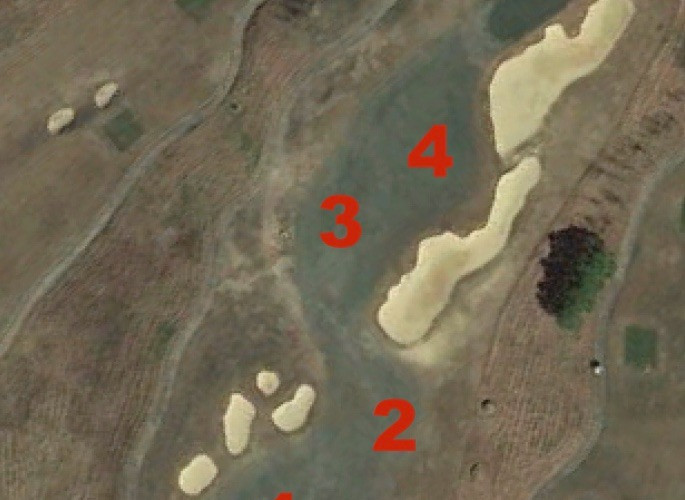




















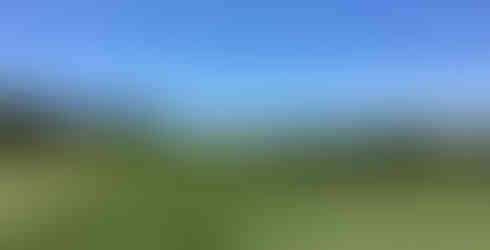











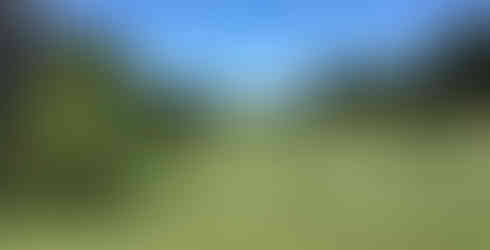





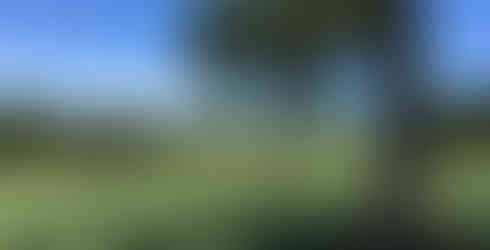





























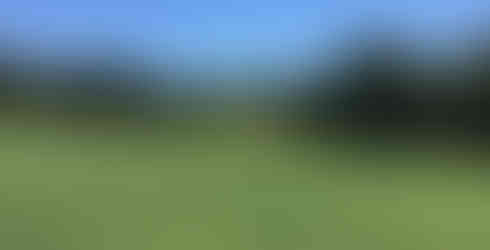








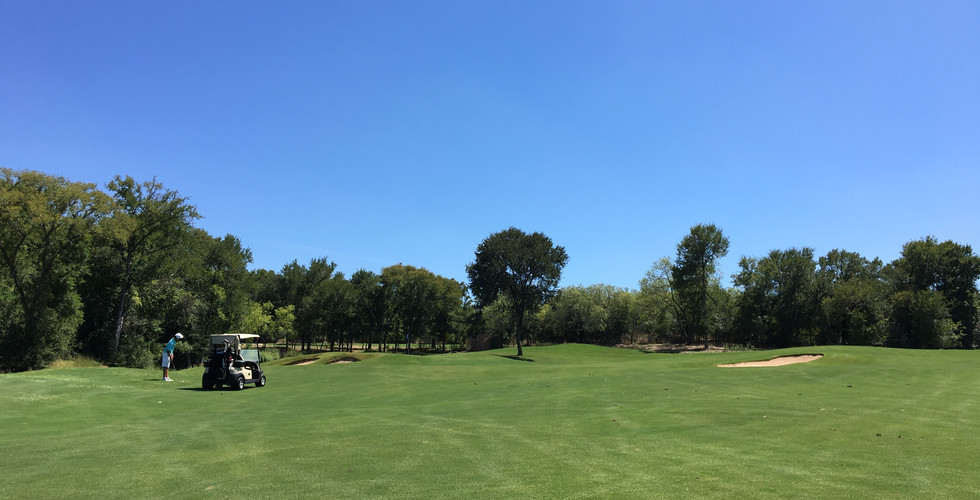












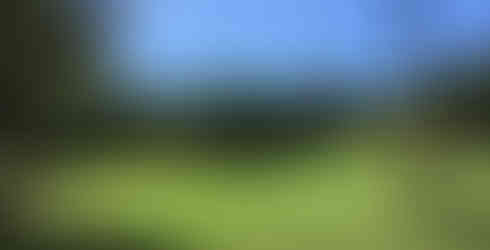







































Comments